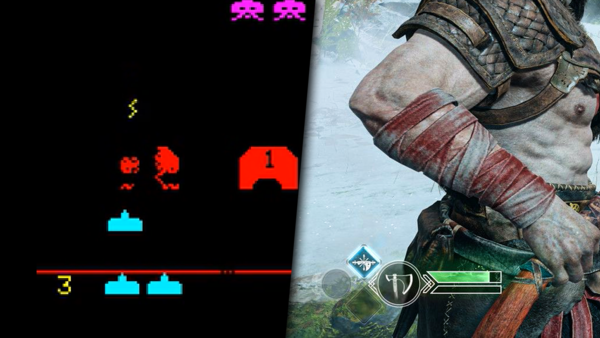The Evolution Of Video Game UI
Health

When you’re told to imagine a health meter, you probably think of one thing. A bar. Doesn’t matter on the colour or size, it’s the most to-the-point means of seeing your character’s health. Once the bar depletes, you’re dead. Either you’re back to a checkpoint, or you’re fishing out another 25 cents. However, various games across the decades have taken this usually simple approach and done it in their own way. It could be a numerical value up to 100, or different amounts based on your class or character stats. It could be a row of hearts. It could be something more unique, or it could be nothing. Super Mario Brothers on the NES explicitly showed values for your coins, lives, score, and remaining time, but Mario’s health was depicted by his size and/or colour palette, with replenishments taking the form of super mushrooms, fire flowers, and the like. Sonic the Hedgehog took a semi-similar approach, with the blue blur able to sponge one hit when holding at least a single ring. You didn’t have a life, power, or energy meter in these early games, though these cropped up eventually as both the series aged.
On a more whimsical extreme, 1983’s Atic Atac on the ZX Spectrum and BBC Micro, produced by a company eventually to be known as Rare, displayed your health as an entire roast chicken, slowly bring picked away to reveal the skeletal carcass underneath. The television series Knightmare took some inspiration from this. Did this health meter terrify anyone else as a kid? I know it did me. Wolfenstein 3D and Doom decided not to make a choice of form or function, and instead opted to do both. Giving you a numeric value for your health, but also having the visage of your protagonist becoming bloodier by the wound. You had a choice of either taking a moment to read a number, or have a quick glance to see the state of your own face. Either worked well enough to tell you how you were doing. Something Doom more specifically also did with it’s HUD (heads up display) alone, was give you all the information you could have possibly needed- No menus, weapon switching, or any tinkering required. All weapons and ammo values were on-screen the whole time. It wasn't something Doom invented, but it was a much more refined depiction of what we had seen before...